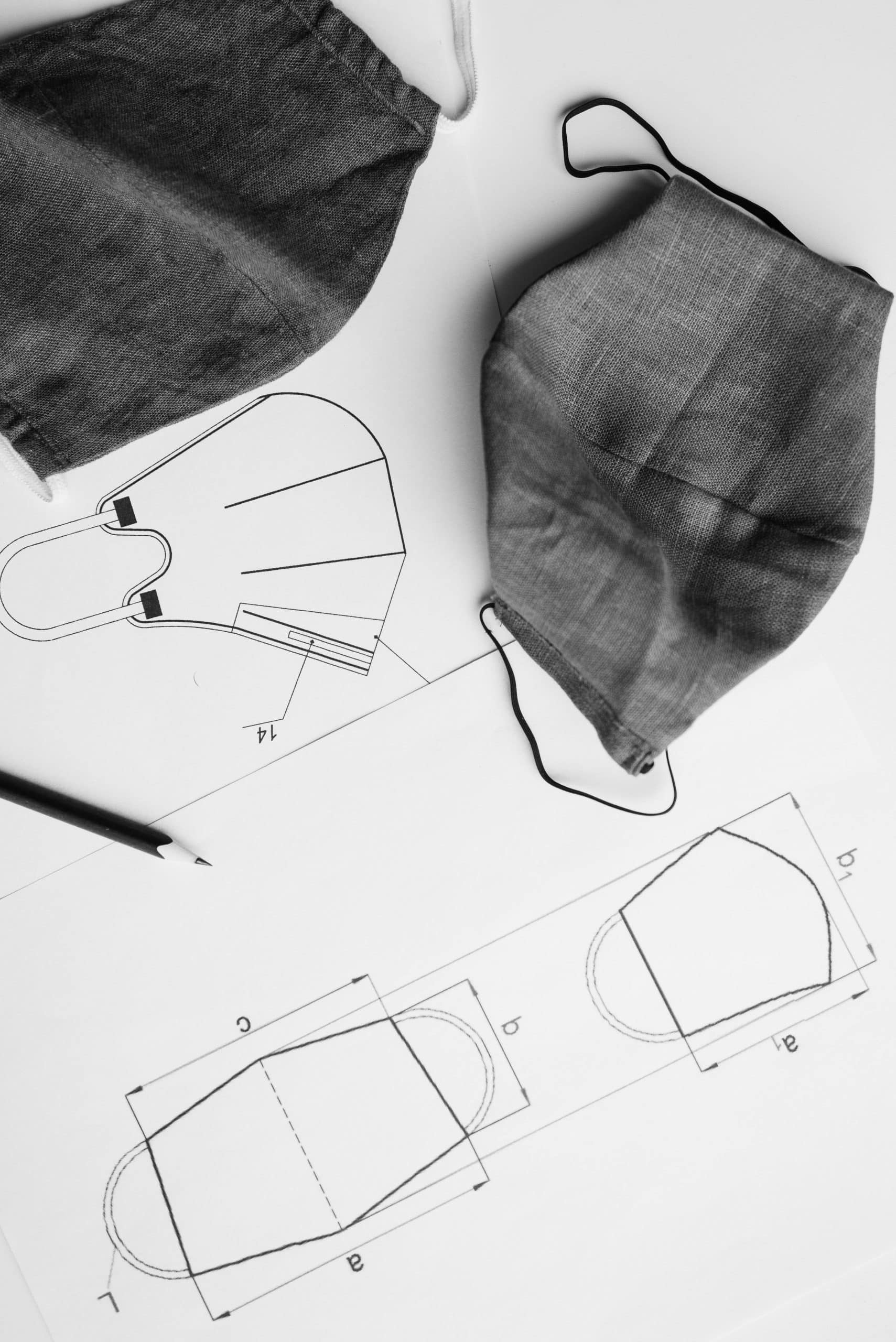Sewing has been a steady part of my home life – I’ve stitched my kids’ cloth diapers, made their bibs, and even sewn a few of their clothes and inserts.
Each project has reminded me that making something from scratch is not only possible but also rewarding.
For me, sewing ties closely to sustainable living. A set of napkins, a tote bag, or a simple garment becomes more than fabric and thread – it’s a practical way to waste less and live more intentionally.
In this article, I’m sharing 15 simple sewing projects that anyone can make. They’re approachable, purposeful, and a good place to begin if you’d like sewing to become part of your daily rhythm too.
15 Simple Sewing Projects You Can Make at Home
Sometimes the best projects are the simple ones you can sit down and finish in an afternoon.
These simple projects are perfect for when you want to make something quick, creative, and useful. From home essentials to sweet little gifts, here are 15 sewing ideas anyone can try.
If you’d like even more inspiration, take a look at these easy sewing projects for beginners.
1. Simple Linen Napkins

Napkins are one of the easiest and most satisfying projects to begin with.
The sewing is straightforward (just clean hems along each side) yet the result instantly elevates your everyday meals.
I like to use natural fabrics such as linen or cotton because they wash well and feel durable in daily use.
Making a set also builds rhythm in your sewing, giving you confidence through repetition.
Once finished, you’ll have something both practical and beautiful to use at the table every single day.
2. Envelope Pillow Covers
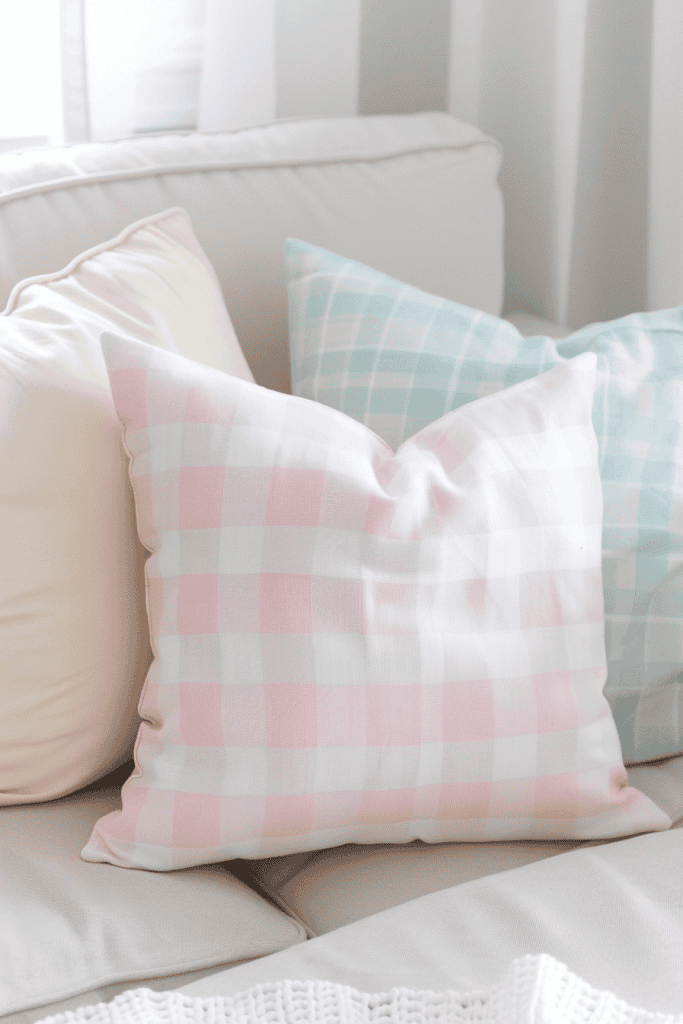
If you want a quick project, envelope pillow covers are a perfect choice.
They require no zippers or buttons, just overlapping fabric in the back that creates a tidy closure.
This project teaches you how to measure and cut with intention while still being forgiving if your stitches aren’t perfect.
The best part is how quickly you can change the look of a room – fresh pillow covers can completely shift the feel of a couch or bed.
Reach for this project when you want both practice and an immediate result you’ll enjoy at home.
3. Drawstring Laundry or Storage Bag

A drawstring bag is both useful and a great way to learn new skills.
You’ll practice making a casing for the drawstring, which is a technique you’ll use again in clothing and other projects.
These bags work well for storing laundry, toys, or even as travel pouches.
They’re endlessly adaptable – you can make them in any size and from whatever fabric you already have on hand.
Once you make one, you’ll find plenty of reasons to stitch a few more for your home.
4. Curtain Café Panels

Curtains may sound advanced, but café panels are one of the most approachable ways to try them.
The sewing is mostly hemming straight edges, which gives you lots of practice while still delivering a polished result.
I like this project because it teaches you how to measure carefully and think about proportions, yet it doesn’t feel overwhelming.
Café panels also make an immediate difference in a space – they soften the light, add warmth, and bring a handmade touch to your home.
It’s the kind of project that shows you how practical sewing can be for everyday living.
5. Tote Bag with Sturdy Straps

A tote bag is a project that always feels worthwhile.
It introduces you to sewing thicker seams and attaching handles, both useful skills you’ll carry into future projects.
I often choose canvas or another strong natural fabric for this, since it makes the bag dependable for groceries or errands.
What I love most is how functional it becomes – you can even use your handmade totes for years, and they always hold up.
Sewing one reminds you that a simple piece of fabric and thread can replace countless plastic bags in daily life.
6. Fabric Coasters or Mug Rugs

Coasters and mug rugs are small but mighty when it comes to practice.
Because they’re so compact, you can experiment with piecing, topstitching, or even a bit of quilting without a big commitment.
They’re also a perfect way to use up scraps, which makes them both sustainable and affordable.
They make sweet little gifts too – quick to sew yet meaningful (just like these thoughtful sewing gift ideas).
By making a few, you’ll sharpen your accuracy and enjoy the reward of something functional right away.
7. Reusable Cloth Produce Bags
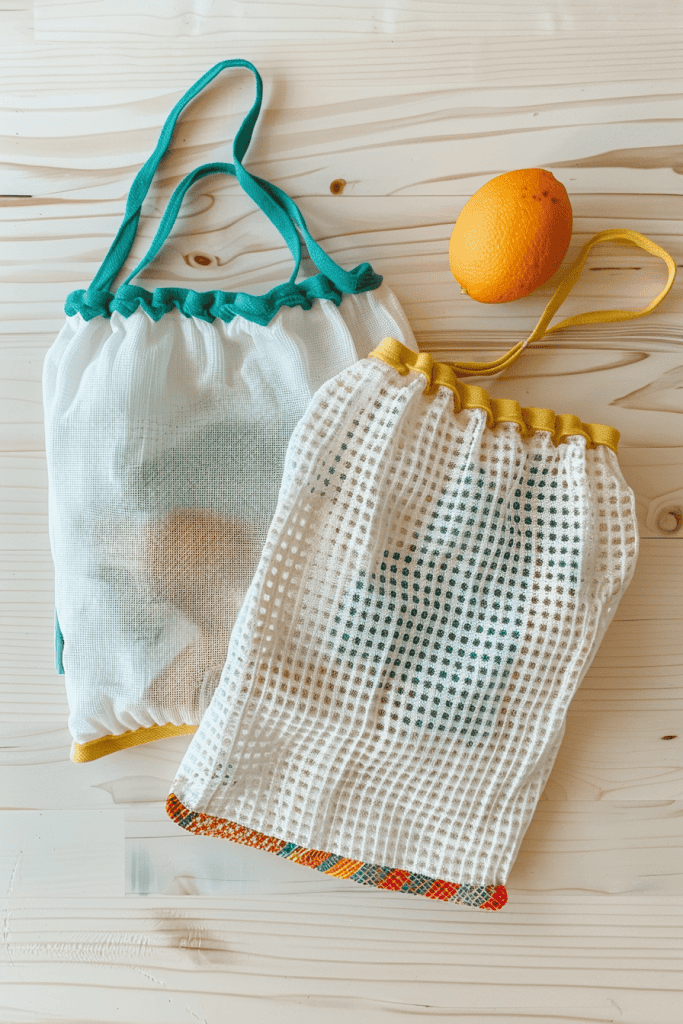
Produce bags are a simple way to bring sustainability into your sewing.
The project is straightforward (sew a lightweight bag with a drawstring or simple hem) and you’ll have something you can use each week at the market or grocery store.
I like making mine from breathable cotton or mesh, which keeps fruits and vegetables fresh.
Because the stitches are uncomplicated, this project is a stress-free way to practice consistency while creating something practical.
Once you’ve sewn a set, you’ll never need the disposable plastic versions again.
8. Apron with Pockets
An apron is both functional and satisfying to sew. It gives you the chance to practice cutting larger pieces, hemming, and adding details like a front pocket.
Who wouldn’t love making aprons? They’re versatile – useful for cooking, gardening, or even crafting with kids.
The design can be as simple or as detailed as you like, but even the most basic apron feels rewarding when it’s done.
Each time you tie it on, you’re reminded that sewing creates tools that serve you daily.
9. Pot Holders or Hot Pads

Pot holders are a wonderful project for learning how to layer fabrics.
They usually involve batting or insulated lining, which introduces you to quilting basics.
They combine creativity with function – you can play with fabric patterns while still ending up with something sturdy enough to protect your hands in the kitchen.
Because they’re small, you can experiment without fear, and even your first attempt will be useful.
This is one of those projects where practice and play naturally come together.
10. Reusable Bowl Covers
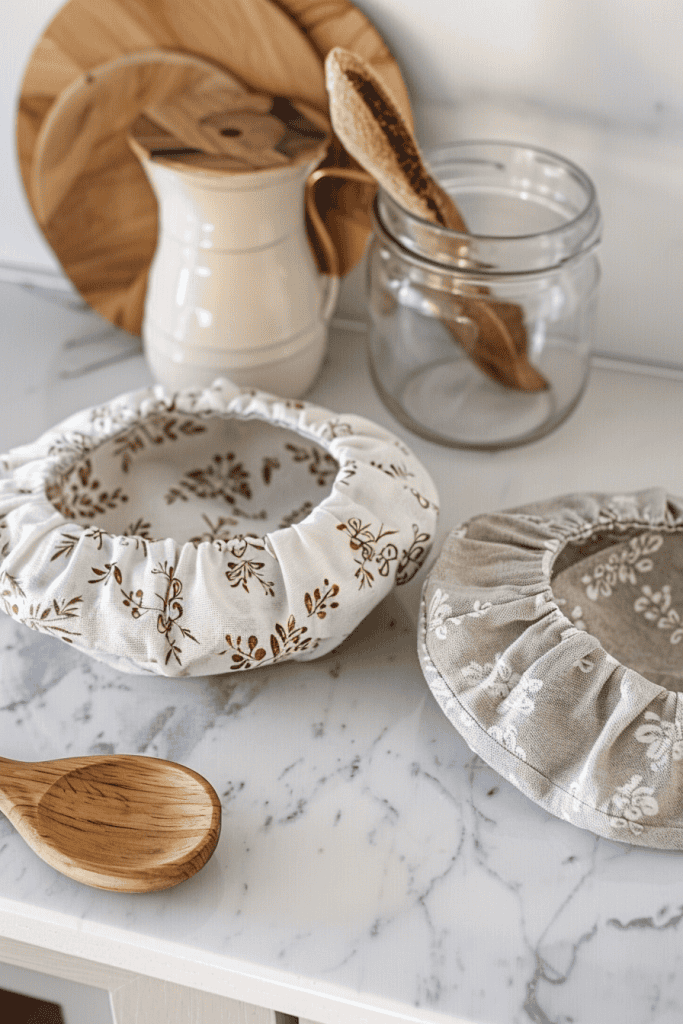
Bowl covers are a simple project with an immediate payoff in daily life.
They’re made by cutting circles of fabric, hemming the edges, and adding elastic – skills that are approachable even for beginners.
You can use cotton with a washable lining, so they can be cleaned and reused again and again.
They’re especially helpful in the kitchen when you want to cover leftovers or prep food without plastic wrap.
It’s a project that proves how sewing can support both convenience and sustainable living.
11. Simple Elastic-Waist Skirt

An elastic-waist skirt is one of the most encouraging first garments to try.
The construction is simple (just a rectangle of fabric gathered by elastic) yet the result feels polished and wearable.
This project is a confidence booster, because it shows that clothing doesn’t have to be complicated.
It also teaches you how to work with waistbands and gather fabric, both useful techniques for sewing other garments.
At the end, you’ll have something you can slip on and feel proud of creating yourself.
12. Headbands or Hair Scrunchies
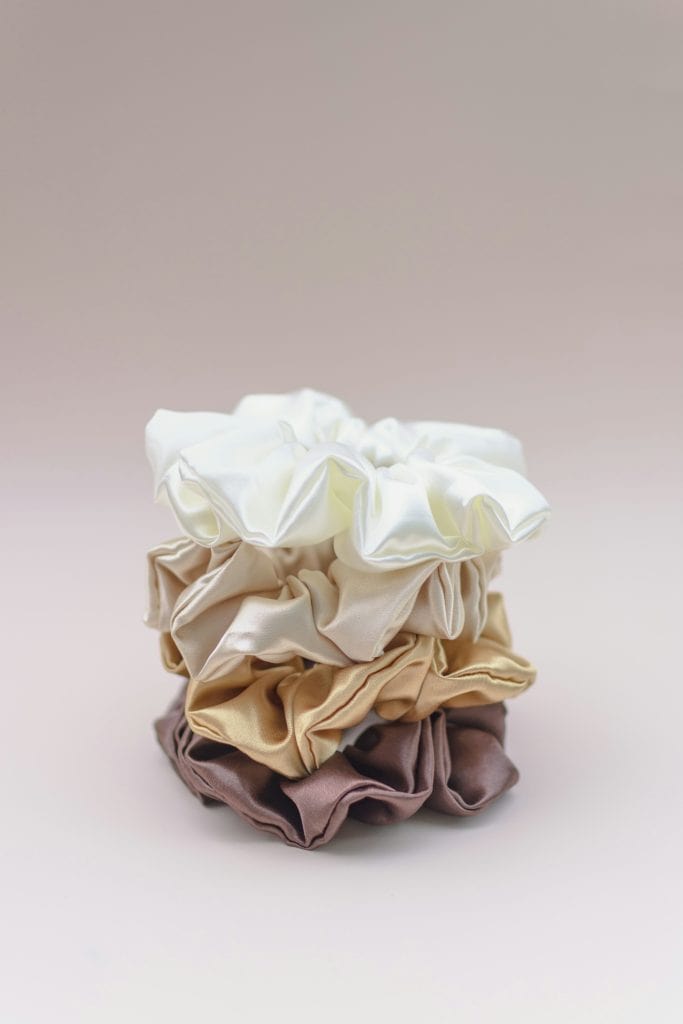
These quick little projects are a joy to sew and perfect for using up fabric scraps.
You’ll learn how to make neat seams and, in the case of scrunchies, how to thread elastic through a casing.
They’re fun, practical, and add a handmade touch to everyday routines.
They’re also excellent beginner projects because you can make several in a short amount of time, building skill with each one.
A stack of scrunchies or headbands makes thoughtful gifts, too.
13. Infinity Scarf
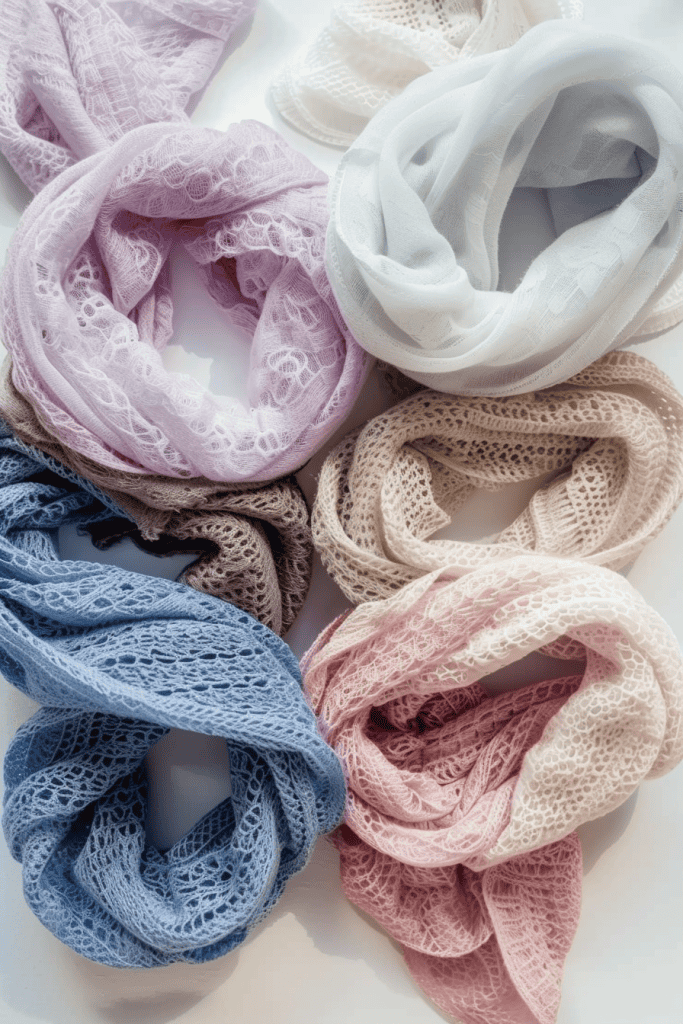
An infinity scarf is one of those projects that feels stylish yet stays wonderfully simple.
The sewing involves long straight seams, joining the ends, and finishing edges neatly – techniques that strengthen your confidence without overwhelming you.
Use soft, breathable fabrics such as cotton or lightweight linen so the scarf feels comfortable to wear year-round.
It’s also a versatile project because you can make it casual or dressy depending on the fabric you choose.
Once complete, you’ll have a piece you’ll reach for often, knowing you stitched it yourself.
14. Lavender Sachets
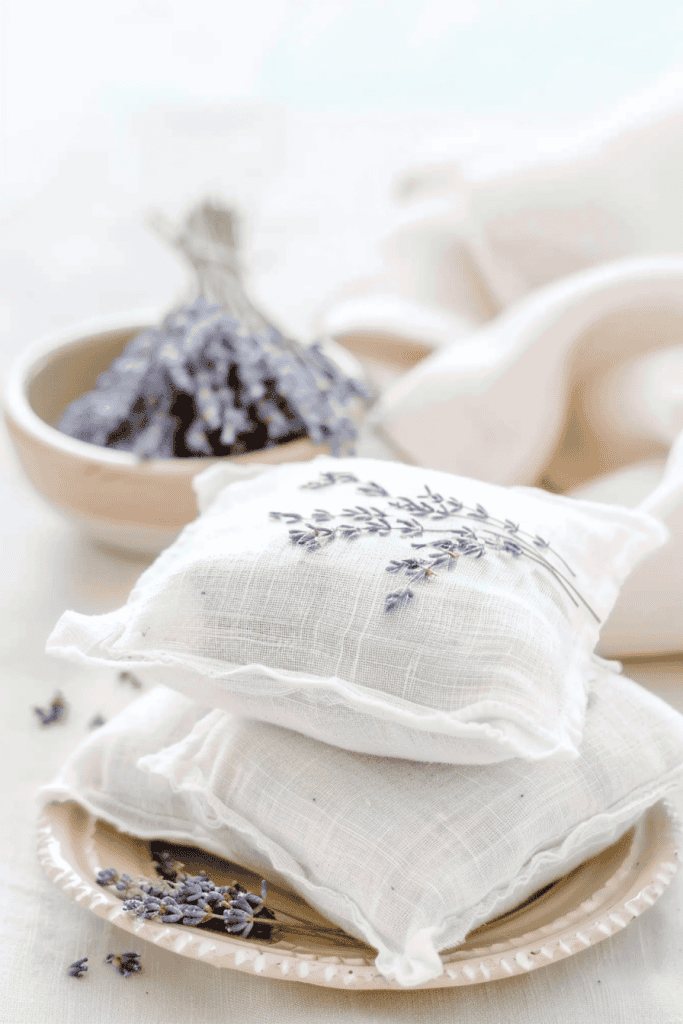
Lavender sachets are a small project with a lot of impact.
They’re simple to sew – just stitch squares or rectangles of fabric, fill them with dried lavender, and close the seam neatly.
I like making them from natural cotton or linen, which lets the fragrance breathe through the fabric.
Once finished, they’re perfect for tucking into drawers, closets, or even under a pillow.
It’s a quick project that combines function and beauty, while also giving you a thoughtful gift option to share with others.
15. Book Sleeves
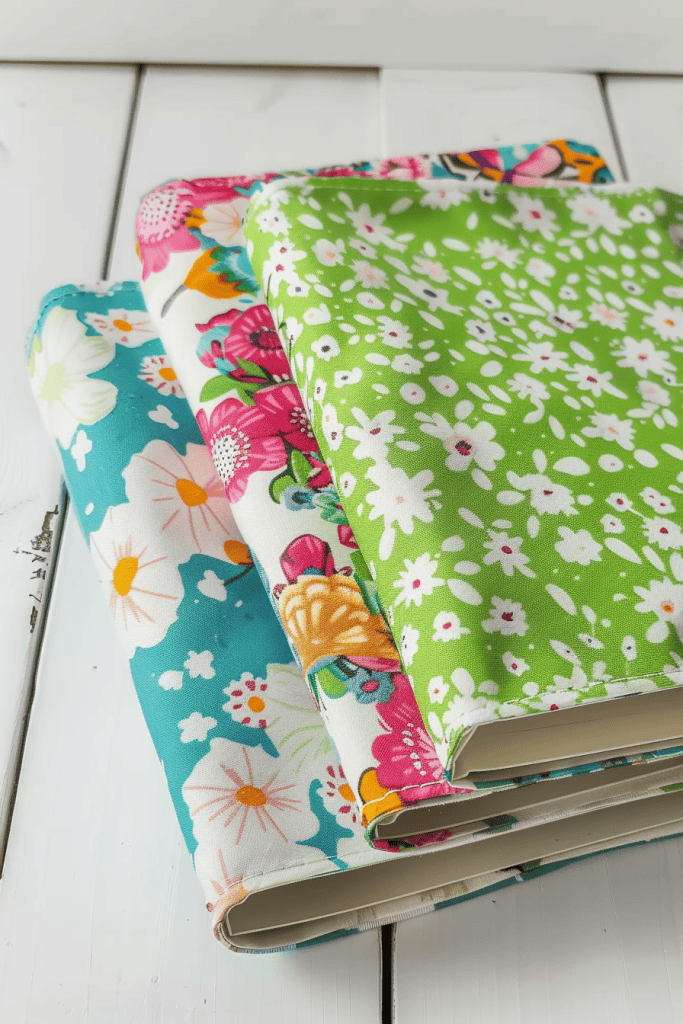
A book sleeve is a simple project that feels both practical and thoughtful.
The design is essentially a padded fabric pocket, lined on the inside to protect your favorite reads from wear and tear.
Use sturdy cotton on the outside and a soft lining inside to give structure while still feeling smooth against the book.
Sewing one teaches you how to add lining and work with padding – skills you’ll use again in other projects.
Best of all, it turns fabric scraps into something protective and long-lasting.
How to Choose Your First Project
The best first project is one that feels useful to you right now. If you want something for your kitchen, start with napkins or bowl covers.
If you’d love a quick win, scrunchies or sachets will give you results in minutes.
When you choose based on your own needs, the project becomes more motivating and meaningful.
Think, too, about the skills you’d like to build.
Straight-line sewing builds confidence, while projects with casings or elastic introduce techniques you’ll use often later.
There’s no single “right” place to begin what matters is starting.
Tips for Success
Sewing is a skill that grows with practice. Each project gives you something useful, but it also teaches you a new habit or technique along the way.
A few simple guidelines can help you enjoy the process and build confidence as you go.
- Start simple and steady. Consistency in your stitches matters more than speed. With time, your sewing will naturally become more precise.
- Press as you go. An iron is one of the most powerful tools in sewing – it sharpens seams, flattens edges, and instantly makes your work look polished.
- Measure twice, cut once. Taking an extra moment with measuring prevents mistakes and helps you feel confident as you sew.
- Work with what you have. Repurposing old fabric or using scraps keeps projects affordable and sustainable while giving you practice.
Start Your First Project Today
Sewing doesn’t need to be complicated to be rewarding.
A set of napkins, a tote bag, or even a lavender sachet is enough to teach you new skills while giving you something useful in return.
The more you practice, the more natural sewing will feel – and soon, you’ll have a collection of handmade items that serve your home and reflect your care.
Choose one project from this list and begin this week. Gather the fabric you have, set up your sewing space, and enjoy the process of creating something from your own hands. Small, consistent steps will build both your confidence and your skill.
Enjoy your project this week! If you have any little tips or questions while sewing, feel free to comment down below.
FAQs
Do I need a sewing machine to start these projects?
Not at all. Many of these projects can be sewn by hand with a needle and thread. A machine makes things faster, but it’s not required for learning the basics.
What fabrics are best for beginners?
Natural fibers like cotton and linen are the easiest to work with. They hold their shape, press well, and are forgiving as you learn. Avoid slippery or stretchy fabrics until you feel more confident.
How much time does a simple project take?
It depends on the project, but most on this list can be finished in an hour or less. Small projects like scrunchies or sachets are especially quick, while tote bags or skirts may take an afternoon.
Can I use fabric scraps for these ideas?
Yes, absolutely. Scraps are perfect for small projects like coasters, headbands, or lavender sachets. They keep costs low and reduce waste, making your sewing more sustainable.
How do I improve my sewing skills as a beginner?
Start small and focus on steady progress. Practice straight seams, press your fabric as you go, and repeat projects until you feel comfortable. Each item you make will build your skill and confidence.

